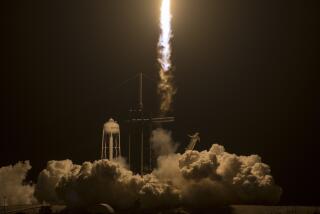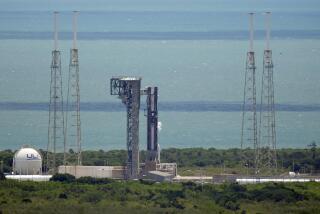Science Satellite Release Fails Again
- Share via
KENNEDY SPACE CENTER, Fla. — For the second day in a row, NASA failed to release a science satellite from the space shuttle Discovery on Sunday and tried to salvage what little it could from the experiment.
Ground controllers raced against the clock to try to resolve the latest satellite problem: a malfunctioning guidance system. NASA said today would be its last opportunity to deploy the Wake Shield Facility.
The Wake Shield was supposed to fly free of the shuttle for two days so scientists could try to grow semiconductor films in the ultra-clean wake created by the saucer-shaped craft. There would be time for only one day of free flight if the satellite is deployed today.
As Discovery whizzed around Earth with the Wake Shield propped on the end of the shuttle’s robot arm, Mission Control struggled to pinpoint the problem with the satellite’s horizon sensor. The infrared sensor is supposed to help guide the satellite when it flies.
On Saturday, Discovery’s six crew members were stymied by radio interference and glare from the sun. Those problems were resolved Sunday: Astronaut Jan Davis tilted the satellite on the end of the arm to eliminate the interference, and the crew used electronic signals, rather than status lights.
The crew was disappointed by the setbacks, especially astronaut Ronald Sega, who has spent years working on the Wake Shield.
Cosmonaut Sergei Krikalev, the first Russian to fly on a U.S. shuttle, had trained for more than a year to retrieve the satellite.
More to Read
Sign up for Essential California
The most important California stories and recommendations in your inbox every morning.
You may occasionally receive promotional content from the Los Angeles Times.













